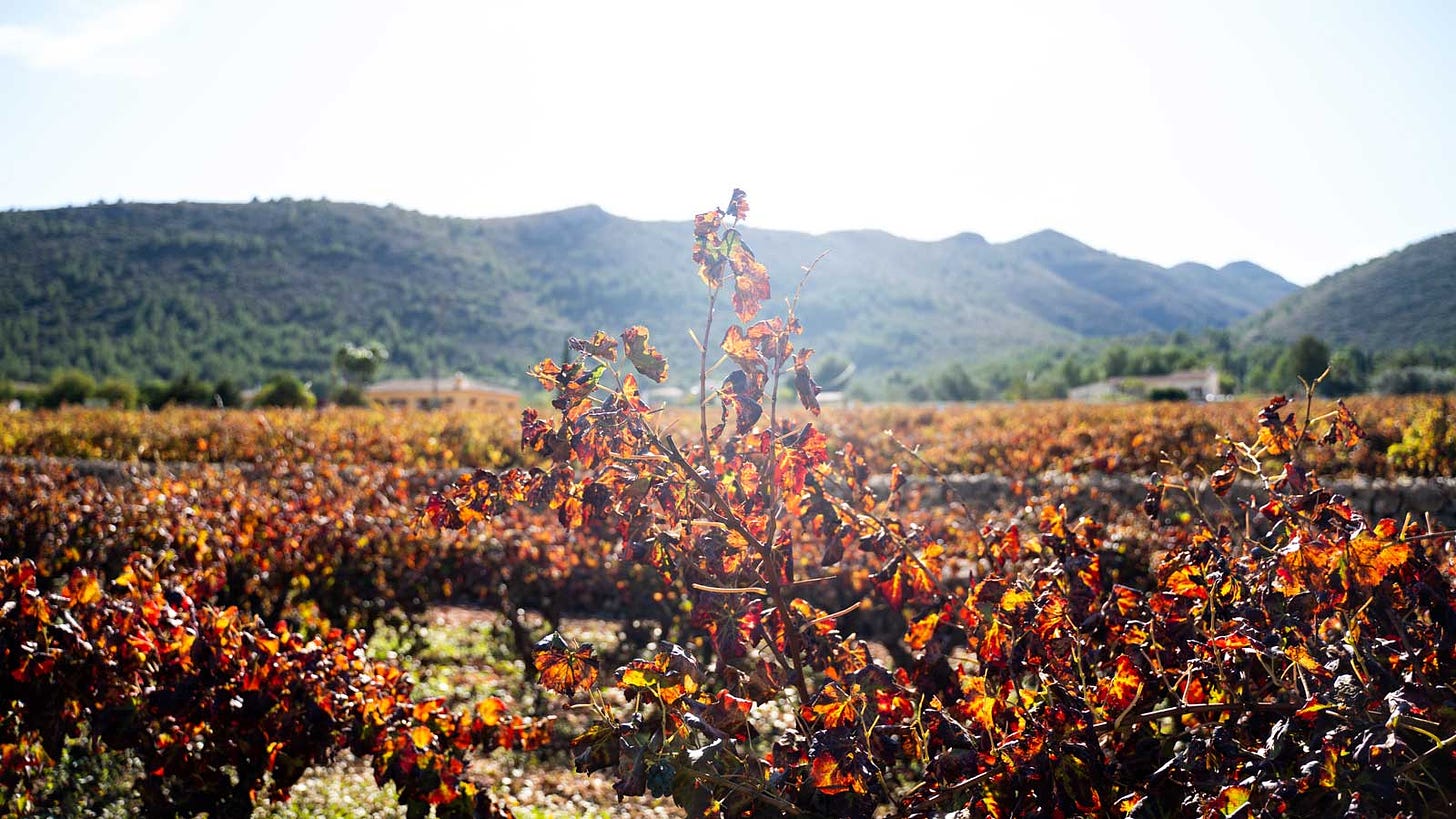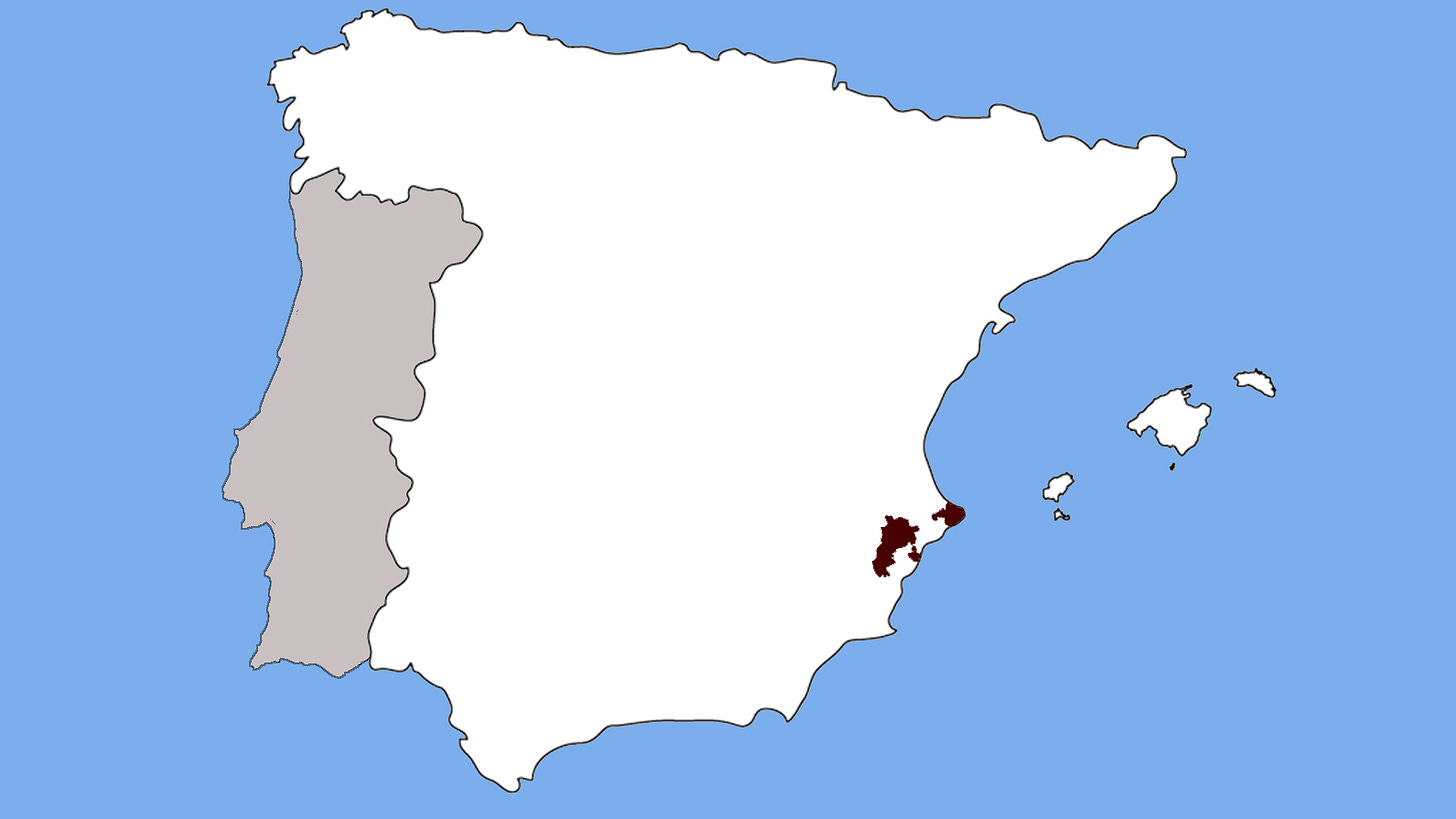DO Alicante
This article was originally published on our old website, Simply Spanish Wine.
Image courtesy of the Pepe Mendoza Casa Agrícola in Alicante
Key Points
Grape varieties: Monastrell, Garnacha, Moscatel de Alejandría
Hectares planted: 10,000
Grape growers: 2,000
Wineries: 40
About DO Alicante
Like all of the levante español, the history of Alicante is the history of the various civilizations that have passed through the region - the Iberians, Phoenicians, Romans, Arabs, the Reconquista and down to the present day.
The region has had DO status since the early part of the 20th century, although in winemaking terms, much of its production came from cooperatives with a focus on lower-priced wines produced in quite large volumes. But as elsewhere in Spain, in the last ten years the region has undergone something of a renaissance, with a new generation of producers rediscovering the uniqueness of the local terroir and producing fresher wines that bring out the best of the local grape varieties.
The geography of DO Alicante
There are around 40 wineries certified under the DO Alicante covering over 10,000 hectares. The DO is broken down into eight sub-zones:
Alacantí
Vinalopó Alto
Vinalopó Medio
Vinalopó Bajo
L´Alcoiá
El Comtat
La Marina Alta
La Marina Baja
Across the DO you'll find a variety of soil types and climate variations that give the wines of this region subtle nuances depending on where they are made.
The climate of DO Alicante
The climate of DO Alicante varies as you move from the low-lying lands of the coast further inland and higher up towards Vinalopó Alto. The lower areas like Marina Alta enjoy a typical Mediterranean climate, with mild winters, long, warm springs and quite hot summers with temperatures that can reach 35ºC. But as you climb up to around 700m above sea level in the inland region of Vinalopó Alto, the climate is semi-continental, with Mediterranean and continental influences from the Castilian plain, or meseta to the west. This makes for more extreme temperatures, with summer temperatures often around 40ºC, while in winter the mercury can plunge to 5ºC.
The grapes of DO Alicante
In terms of its grapes and its wines, Alicante is a region that likes to present itself as having something for everyone. Whites are generally made with the famous Moscatel de Alejandría - or Muscat of Alexandria – grape, which for many wine lovers is the Mediterranean grape variety. It thrives in the hot, dry climate and its key characteristic is that it is one of the only wine grapes that produces wines that actually taste like grapes. It’s used to make a whole range of wines, from pale and bone-dry white table wines to golden, sweet dessert wines.
Red wines are usually made with the Monastrell grape which tends to give quite intense, full-bodied wines with lots of rich, dark fruit – think blackberries, cherries or plums – and aromas of Mediterranean forest and sometimes a more mineral streak. And of course, Monastrell is the grape used to make Fondillon, Alicante’s famous sweet wine.







